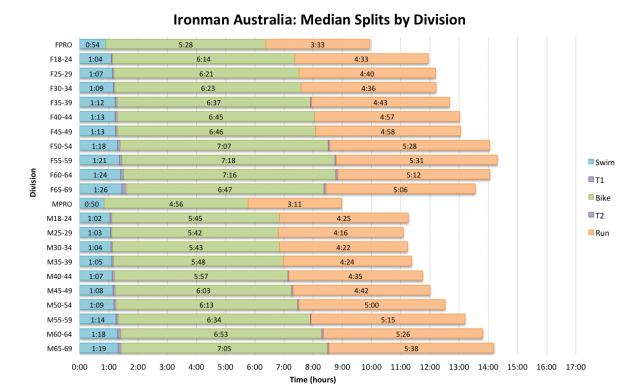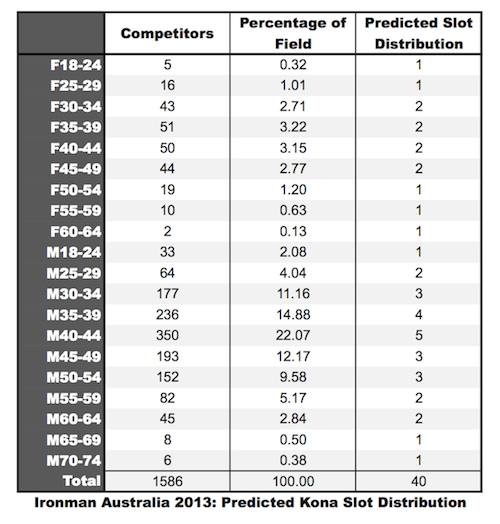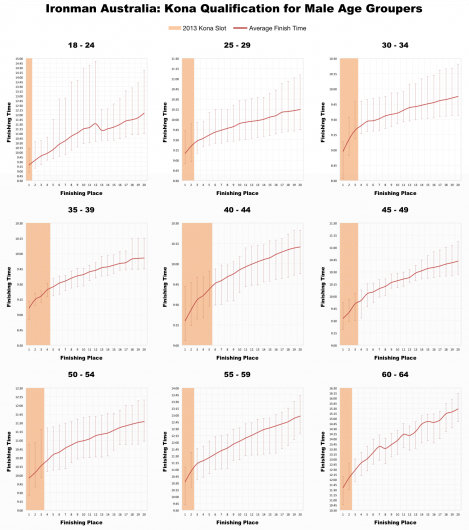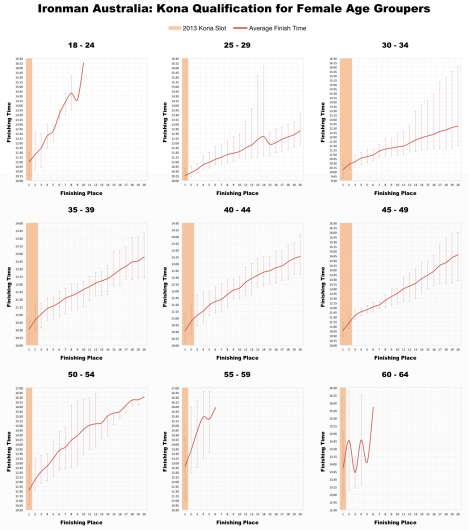In 2009, the one occasion I raced Ironman Australia, conditions were decidedly damp. Heavy rains had caused flooding to the north and west of Port Macquarie washing debris down the Hastings river and threatening to cancel the swim. If only it had. Right from the gun my race went wrong: I placed myself poorly to begin, struggled with the swim then plodded through both bike and run. Not my finest hour and much as I’d like to blame the course there were those who managed to race well that day.
The chart above shows the distribution of finisher splits over the last seven years of the event. There is a clear leftward skew in most of the graphs, in part from the level of competition, but the peak times don’t quite match the fastest courses on the circuit. When I compared all the events of 2012 I ranked Australia just outside the top third of races; based on my own experience of the course this feels about right.
We can also consider the average times for each division (above) to build a more detailed picture of the race. Again these are not the fastest splits on the circuit, but they are also a way from the slowest. Port Macquarie is neither a particularly quick nor particularly slow course.
You might not go to Ironman Australia looking for an easy PB, but you may go there looking for Kona slots. For Australians (and New Zealanders) Port Macquarie is the final ‘local’ qualifier for the Ironman World Championships. Unfortunately it only has 40 slots to share among twenty age groups.
In most age groups, as my predicted allocation shows, Kona slots are thin on the ground. As usual the male 40-44 year old division dominates the field and the slots, but even then you will need a top 5 finish to guarantee a trip to the big island. It may be the last chance and that may mean that many have already claimed their slot, but that doesn’t mean it’s going to be easy.
We can attempt to judge just how hard it might be by looking at the average, fastest and slowest performances of the top 20 in each age group over the last seven years.
So far this season these charts have not been the greatest predictor of performances – some race have fallen within the bounds while others have not. Past times cannot predict future performances, but they can offer some sense of where you need to be. A 40-44 year old man might notice that over the last seven years a 9:45 would likely be good enough for a top 5 finish and in this case Kona, a 30-34 year old on the other hand should be aiming a bit faster if they’re after one of 3 slots. Then there is the potential for roll down and with Western Australia, New Zealand and Melbourne done that may be more likely.
As ever all you can do is turn up and race to the best of your ability. Hopefully if you are there and you are chasing a slot you’ll be better prepared than I was back in 2009.









